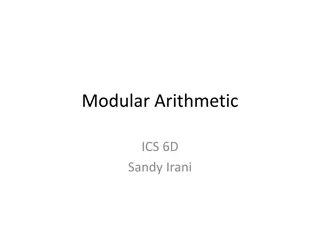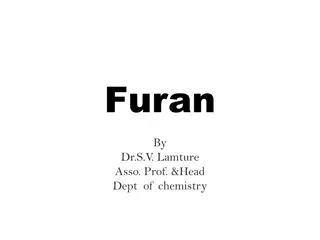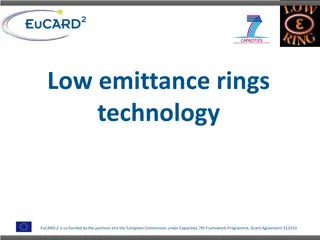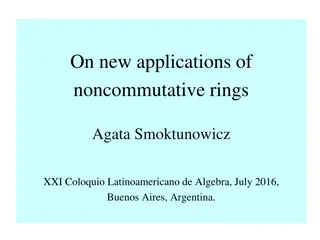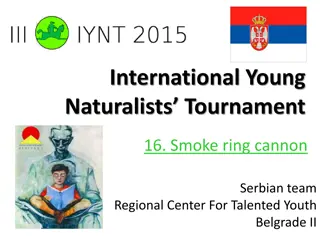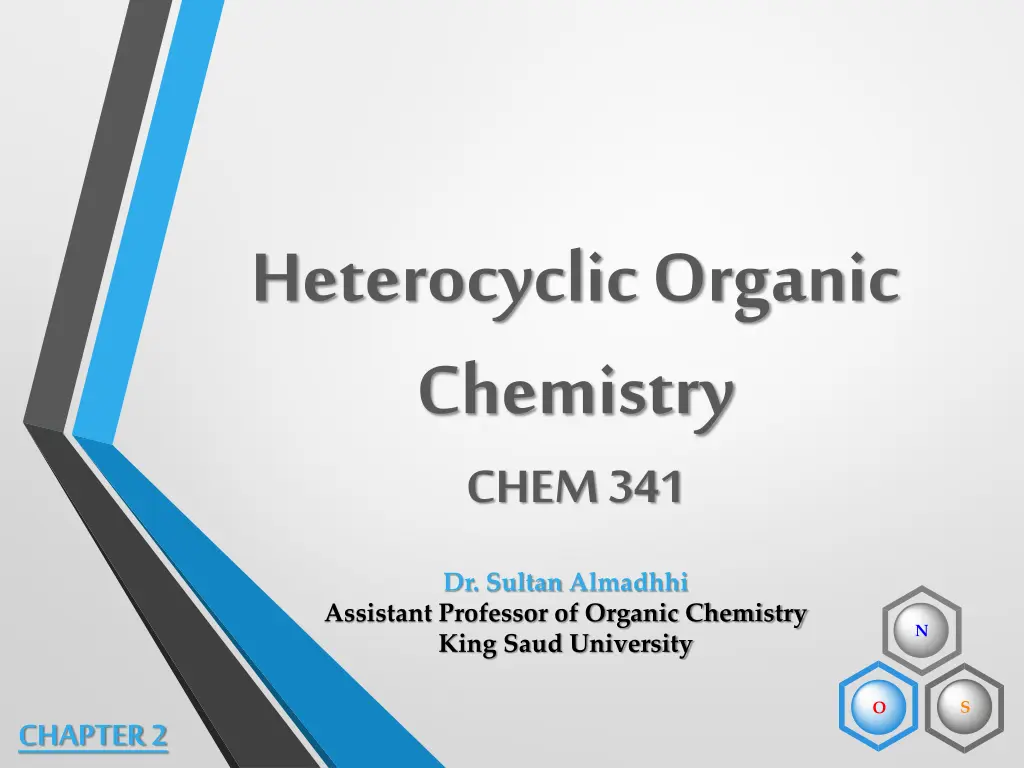
Heterocyclic Organic Chemistry: Five-Membered Rings and Their Properties
Explore the significance of pyrrole, thiophene, and furan in organic chemistry, their presence in natural compounds, and their physical properties. Learn about the aromaticity and reactivity of these heterocyclic compounds compared to benzene.
Download Presentation

Please find below an Image/Link to download the presentation.
The content on the website is provided AS IS for your information and personal use only. It may not be sold, licensed, or shared on other websites without obtaining consent from the author. If you encounter any issues during the download, it is possible that the publisher has removed the file from their server.
You are allowed to download the files provided on this website for personal or commercial use, subject to the condition that they are used lawfully. All files are the property of their respective owners.
The content on the website is provided AS IS for your information and personal use only. It may not be sold, licensed, or shared on other websites without obtaining consent from the author.
E N D
Presentation Transcript
Heterocyclic Organic Chemistry CHEM 341 Dr. Sultan Almadhhi Assistant Professor of Organic Chemistry King Saud University CHAPTER 2
CHAPTER 2 Five-Membered Rings 2
o The primary motivation for studying pyrrole stems from research on the structure of hemoglobin, the respiratory pigment in blood, and chlorophyll, the green pigment responsible for photosynthesis in plants. o Thiophene is found in plants, where it is closely associated with polyacetylenes, sharing a biogenetic link with them. o Furan is prevalent in secondary plant metabolites, particularly within terpenoids. o Pyrrole, furan, and thiophene in their unsubstituted forms are typically derived from petroleum. 3
Physical Preparties A. Ring Containing One Heteroatom o Pyrrole, thiophene and furan are colorless liquids with boiling points of 131 , 84 and 32 respectively. o Pyrrole has a relatively higher boiling point compared to furan and thiophene due to the presence of intermolecular hydrogen bonding in pyrrole. 5
Physical Preparties A. Ring Containing One Heteroatom o Pyrrole, thiophene and furan aromatic due to; 1) They fulfill the criteria for aromaticity, with the extent of delocalization of the nonbonding electron pair being decisive for their aromaticity. Consequently, the order of aromaticity is: Furan < Pyrrole < Thiophene < Benzene This order aligns with the electronegativity ? values of Oxygen O (3.44), Nitrogen N (3.04), and Sulfur S (2.56). Delocalized over the entire ring Electron pair in a p orbital, part of the 6 ? electron system. Electron pair in a sp3 orbital 6
Physical Preparties A. Ring Containing One Heteroatom 2) They typically undergo electrophilic substitution reactions due to the negative charge (-ve) developed on carbon atoms from delocalization, as depicted in the following resonance structures. 7
Physical Preparties A. Ring Containing One Heteroatom The order of aromatic character for these three heterocycles compared to benzene is as follows: Furan < Pyrrole < Thiophene < Benzene This order aligns with the resonance energies and the electronegativity values In comparison to benzene, the order of reactivity in electrophilic substitution is as follows: Benzene < Thiophene < Furan < Pyrrole 8
Physical Preparties A. Ring Containing One Heteroatom Electrophilic substitution on furan requires very mild, non-acidic conditions because the presence of acids can lead to polymerization or ring opening. In contrast, thiophene is more tolerant of acidic conditions; it remains stable in the presence of aqueous mineral acids but is susceptible to reaction in the presence of 100% strong acids or Lewis acids, such as; AlCl . Regioselectivity: The 2 and 5( ) positions are more reactive than 3 and 4( ) positions, as in pyrrole the intermediate results from electrophilic attack at C2 can be stabilized by three resonance structure while the intermediate results from the attack C3 is only 9 stabilized by two resonance structures.
Physical Preparties A. Ring Containing One Heteroatom o Evidences of aromatic character in Pyrrole; 1) All bonds within the ring are intermediate between single and double bonds. 2) It primarily undergoes electrophilic substitution reactions. 3) It shows lower basicity and higher acidity as a secondary amine compared to pyrrolidine, due to the nitrogen lone pair's involvement in the aromatic sextet. This reversal in dipole moment causes protonation at carbon atoms rather than nitrogen. Dipole moment of pyrrole and its saturated analog Basicity of pyrrole and its saturated analog 10
Physical Preparties B. Ring Containing Two Heteroatoms o Pyrazole and Imidazole; Only the nitrogen with hydrogen (Blue) contributes two electrons to the aromatic sextet, acting like pyrrole nitrogen, while the hydrogen- free nitrogen (Red) is pyridine-like. 11
Physical Preparties B. Ring Containing Two Heteroatoms o Resonance structure of Imidazole; The lone pair on the pyrrole-like nitrogen is delocalized around the ring, while the lone pair on the pyridine-like nitrogen remains localized in the nitrogen s sp orbital. As a result, these compounds exhibit properties that are intermediate between pyrrole and pyridine. 12
Physical Preparties B. Ring Containing Two Heteroatoms o Solubility of Pyrazole and Imidazole; Imidazole and pyrazole are water-soluble solids that are insoluble in aprotic solvents. Their boiling points are significantly higher than that of pyridine, with imidazole at 256 C and pyrazole at 187 C. This difference arises because imidazole has more extensive hydrogen bonding, allowing its molecules to form oligomers, which requires more energy to break the bonds and transition between phases. In contrast, pyrazole molecules primarily form dimers, requiring less energy for phase changes. 13
Physical Preparties B. Ring Containing Two Heteroatoms o Solubility of Pyrazole and Imidazole; Pyrazole molecules as a dimer Imidazole molecules as a polymer N-substituted imidazole and pyrazole have lower boiling and melting points compared to their unsubstituted counterparts 14 because they are unable to form hydrogen bonds.
Physical Preparties B. Ring Containing Two Heteroatoms o Basicity of Pyrazole and Imidazole; Imidazole is a stronger base compared to pyrazole, pyridine, and especially pyrrole. As a result, imidazole and pyrazole are more stable than pyrrole in acidic environments. Pyrrole < Pyrazole < Pyridine < Imidazole 15
Physical Preparties B. Ring Containing Two Heteroatoms o Basicity of Pyrazole and Imidazole; Basicity can be described as follows; i. The pyrrole is not basic because the lone pair on its nitrogen is essential for maintaining the This lone pair is in a p orbital contributing to the 6 electrons in the aromatic ring aromatic system. If protonation does occur, it happens at the carbon rather than the nitrogen, and the resulting cation 16 loses its aromaticity.
Physical Preparties B. Ring Containing Two Heteroatoms o Basicity of Pyrazole and Imidazole; ii. The imidazole contains two nitrogen atoms, and upon protonation, the positive charge can be delocalized between them. In contrast, while pyridine's lone pair is available for protonation, as it does not contribute to aromaticity, it only has one nitrogen to stabilize the positive charge, making it less basic than 17 imidazole.
Physical Preparties B. Ring Containing Two Heteroatoms o Basicity of Pyrazole and Imidazole; iii. The pyrazole is a much weaker base compared to imidazole and pyridine, despite having two nitrogen atoms like imidazole. This is because the positive charge in the pyrazolium ion is less stabilized than in the imidazolium and pyridinium 18 ions.
Physical Preparties B. Ring Containing Two Heteroatoms o Basicity of Pyrazole and Imidazole; iv. Substitution plays an important role in influencing basicity. Typically, electron-donating groups (E.D.G.) on the ring enhance basicity, whereas electron-withdrawing groups (E.W.G.) reduce it. For example, N-methyl imidazole is more basic than imidazole. In contrast, N-methyl pyrazole is less basic than pyrazole, likely due to steric hindrance, which hinders the proton's ability to access the lone pair of electrons. 19
Physical Preparties B. Ring Containing Two Heteroatoms o Acidity of Pyrazole and Imidazole; The imidazoles that are unsubstituted at the 1-position are weak acids, with acidity greater than pyrrole and comparable to pyrazole. As a result, both imidazole and pyrazole exhibit amphoteric behavior. 20
Synthesis A. Ring Containing One Heteroatom 1. Paal-Knorr Synthesis from 1,4-dicarbonyl compounds: Pyrrole can be synthesized through the dehydration of 1,4-dicarbonyl compounds in the presence of ammonia NH or amines. 21
Synthesis A. Ring Containing One Heteroatom 1. Paal-Knorr Synthesis from 1,4-dicarbonyl compounds: Furan can be synthesized through the dehydration of 1,4-dicarbonyl compounds in the presence of acids. 22
Synthesis A. Ring Containing One Heteroatom 1. Paal-Knorr Synthesis from 1,4-dicarbonyl compounds: Thiophene can be synthesized from 1,4-dicarbonyl compounds in the presence of a sulfide source, traditionally phosphorus sulfides. 23
Synthesis A. Ring Containing One Heteroatom 2. Knorr Synthesis of pyrrole -Amino ketones react with carbonyl compounds containing an - methylene group, which is preferably further activated, for example, by an ester group. 24
Synthesis A. Ring Containing One Heteroatom 2. Knorr Synthesis of pyrrole To avoid the difficulty of handling -aminocarbonyl compounds, they can be prepared in the presence of the second reactant. Zinc-acetic acid or sodium dithionite (Na S O ) can be used to reduce oximino groups to amino groups. 25
Synthesis A. Ring Containing One Heteroatom 3. The Hantzsch Synthesis of Pyrrole -Halo-carbonyl compounds react with 1,3-dicarbonyl compounds in the presence of ammonia to form Pyrroles. 26
Synthesis A. Ring Containing One Heteroatom 4. The Feist-Benary Synthesis of Furan -Halo-carbonyl compounds react with 1,3-dicarbonyl compounds in the presence of a base (not ammonia) to give Furans. 27
Synthesis A. Ring Containing One Heteroatom 5. Producing Pyrrole involves heating a mixture of Furan, ammonia, and steam with an alumina catalyst. 6. Synthesis of Thiophene Conjugated diynes easily react with hydrosulfide or sulfide under mild conditions to yield Thiophenes. 28
Synthesis B. Ring Containing Two Heteroatoms 1. Synthesis of Pyrazole: Derived from 1,3-dicarbonyl compounds and hydrazines. 29
Synthesis B. Ring Containing Two Heteroatoms 2. Synthesis of Imdazole: Derived from ?-hyroxy ketone and foramide. 30
Reactions A. Ring Containing One Heteroatom 1. Alkylation and acylation of Pyrrole and N-metallatedPyrrole Due to the participation of the Nitrogen N lone pair in aromaticity, Pyrrole exhibits unusually strong acidic properties for a secondary amine. This characteristic allows it to react with strong bases, Grignard reagents, potassium metal in inert solvents, and sodium amide in liquid ammonia, forming salt-like metallated compounds. 31
Reactions A. Ring Containing One Heteroatom 1. Alkylation and acylation of Pyrrole and N-metallatedPyrrole These derivatives can be used to alkylate or acylate Pyrrole, where the site of substitution can vary between the Nitrogen N atom, the -carbon, or the -carbon. The specific position of substitution depends on the type of metallic cation involved and the polarity of the solvent used, as illustrated below: 32
Reactions A. Ring Containing One Heteroatom 2. Cycloaddition reaction; A cycloaddition reaction is a process where two reactants combine, forming two new carbon-carbon bonds simultaneously, and producing a cyclic structure as the final product e.g. Diels-Alder reaction Involves the addition of a compound containing a double or triple bond, known as a dienophile (2 electrons), across the 1,4-position of a conjugated system, specifically a 1,3- diene (4 electrons), resulting in the 33 formation of a six-membered ring.
Reactions A. Ring Containing One Heteroatom 2. Cycloaddition reaction; Heterocyclic compounds can act as a 1,3-diene in Diels-Alder reactions with reactive dienophiles, such as maleic anhydride or benzyne, or with less reactive dienophiles, such as acrylonitrile, in the presence of a catalyst. The diene can be activated by E.D.G while the dienophile by E.W.g. Thus N-alkyl pyrrole and N-amino pyrrole are more reactive than pyrrole itself in Diels-Alder reaction but less reactive than furan (the least aromatic 5- membered heterocycle thus the most reactive in addition) . The order of reactivity in Diels-Alder reaction is as follows which is the reverse of aromaticity order: 34 Thiophene < Pyrrole < N-alkyl Pyrrol < Furan
Reactions A. Ring Containing One Heteroatom 2. Cycloaddition reaction; Pyrrole generally do not readily undergo Diels-Alder reactions; however, they typically participate in -substitutive addition reactions 35
Reactions A. Ring Containing One Heteroatom 2. Cycloaddition reaction; Furan 36
Reactions A. Ring Containing One Heteroatom 2. Cycloaddition reaction; Tiophene 37
Reactions A. Ring Containing One Heteroatom 2. Electrophilic Substitution Reactions; This type of reaction typically takes place at carbon atoms It preferentially occurs at C-2 (the position adjacent to the heteroatom) rather than at C-3. If position 2 is occupied, the reaction occurs at position 3, because an attack at C-2 results in a more stable intermediate, which is stabilized by three resonance structures, compared to the intermediate formed from an attack at C-3, which is stabilized by only two resonance structures 38
Reactions A. Ring Containing One Heteroatom 2. Electrophilic Substitution Reactions; 1) Nitration 39
Reactions A. Ring Containing One Heteroatom 2. Electrophilic Substitution Reactions; 2) Sulfonation 40
Reactions A. Ring Containing One Heteroatom 2. Electrophilic Substitution Reactions; 3) Halogenation 41
Reactions A. Ring Containing One Heteroatom 2. Electrophilic Substitution Reactions; 3) Halogenation 42
Reactions A. Ring Containing One Heteroatom 2. Electrophilic Substitution Reactions; 4) Friedel-Crafts Acylation (C-acylation) 43
Reactions A. Ring Containing One Heteroatom 2. Electrophilic Substitution Reactions; 5) Vilsmeier Acylatior The formylation of pyrrole and furan is achieved by reacting them with dimethylformamide (DMF) in the presence of phosphoryl chloride. 44
Reactions A. Ring Containing One Heteroatom 3. Second Electrophilic Substitution Reactions; 1) Monosubstituted with Electro Withdrawing Group 45
Reactions A. Ring Containing One Heteroatom 3. Second Electrophilic Substitution Reactions; 2) Monosubstituted with Electro Donating Group 46
Reactions A. Ring Containing One Heteroatom 3. Second Electrophilic Substitution Reactions; 3) N-substituted Pyrrole with Electro Withdrawing Group 47
Reactions A. Ring Containing One Heteroatom 3. Reduction and Oxidation Reactions; 1) Reduction Reaction 2) Oxidation Reaction 48
Reactions A. Ring Containing One Heteroatom 3. Reduction of Pyrrol; Condensation With Aldehydes and Ketones Bis(pyrrol-2-yl)methane can be directly synthesized from pyrrole and an aldehyde. When the reaction is carried out in the presence of potassium carbonate, 2,5-bis-hydroxymethylpyrrole is isolated. This diol, when reacted with pyrrole in dilute acid, forms tripyrrane. Further reaction of tripyrrane with 2,5-bis-hydroxymethylpyrrole yields porphyrinogen. Porphyrinogen can be oxidized with chloranil to produce porphine, a structure found in several natural compounds, such as haem in animals and chlorophyll in plants. 49
Reactions A. Ring Containing One Heteroatom 3. Reduction of Pyrrol; Condensation With Aldehydes and Ketones 50

![[PDF⚡READ❤ONLINE] Neptune: The Planet, Rings, and Satellites](/thumb/21522/pdf-read-online-neptune-the-planet-rings-and-satellites.jpg)
